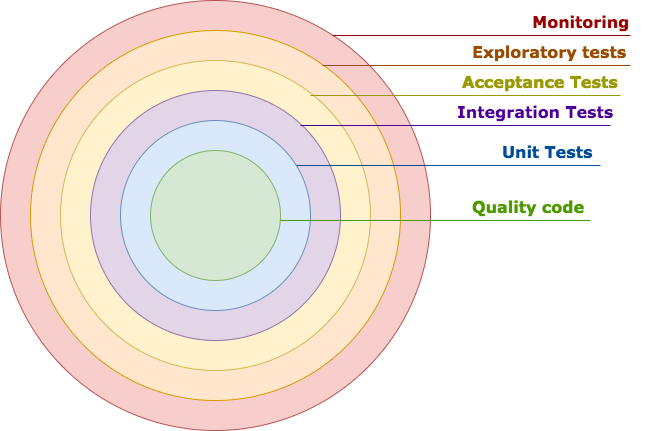Crafting quality software, chapter 2
Making sure it works before its too late

Image CC BY 2.0, Elizabeth Hahn
This has been earlier published in Medium
I started a series of writings describing some important aspects of creating quality software. In the first part I focused on one of the most important piece: people. In this second part I’ll circle a bit around the actual software development process and talk about testing.
So why testing is a topic of importance? Wouldn’t it be easier just to write code and run it as good programmers don’t make mistakes nor create buggy code? We do it in agile way and deploy anyway multiple times a day to production. If there are issues, we’ll fix them fast. And by the way, we don’t need documentation.
One could think like that until a complex time consuming issue halts critical production process for hours and coders stay up whole night hunting the root cause. Afterwards proof that software works and does what it is supposed to do starts to sound a good idea.

Spheres of coder anxiety
Based on my experience I would divide testing to six categories pictured above. If you have ever let a bug slip through your quality assurance process, you may know why I have colour coded the spheres like that.
I’d argue that the sooner issues are detected the cheaper they are to fix. A bug working its way to the utmost sphere has a potential effect to business as it will only be noticed in production environment or worse, it won’t be noticed and it silently causes damage.
There are multiple barriers for ensuring that applications work as expected and I’ll next describe few of them.
Quality code
First step in testing is developers themselves. Application logic should be designed and design critically reviewed. After that implementation should be done and reviewed by someone else if possible.
This way ideas and designs get challenged and developers have to rationalise their decisions before actual code is written and after implementing a solution. Sharing thoughts also helps to pass on knowledge from peer to peer.
Unit tests
Unit testing ensures that separate units of code are tested and refactoring and adding new functionality can be done with confidence as tests verify that nothing breaks.
Of course it is important to write tests that matter. This is usually balancing between confidence, project resources and application criticality. Some demo application maybe doesn’t need rigorous testing but with core banking software there needs to be confidence that it really works as expected.
Some code analysis tools like SonarQube may complain about not writing unit tests for POJOs’ getters and setters but more experienced developers will be confident enough to not to do that.
Good unit tests tell early if something breaks because they are usually run before even committing changes to version control (or at least should be run). This way it is harder to let broken code spread across a project.
Integration tests
Integration testing or as I also like to call it, black-box testing, assures that applications or their components work through their defined interfaces and with systems they are dependent on. For example AWS related applications would test that their integration with various AWS managed services work as expected. Database facing applications would check that all interactions with database work and have anticipated results.
Inter-process testing helps noticing possible issues with application and its dependent systems. This is especially handy when there starts to be multiple versions of components or there is upgrades to external components like databases or third party APIs.
Acceptance tests
Acceptance testing helps to ensure that functional and non-functional requirements defined for an application and/or set of applications are met. Criteria for acceptance should give confidence that applications deliver their intended functionality with defined constraints and performance.
Systematic acceptance tests can provide a consistent and scalable framework for assuring operability of systems through whole business processes that create the actual value for organisations.
There are frameworks like Robot Framework for implementing and automating acceptance tests.
Exploratory tests
Exploratory testing is not always part of a quality assurance process but can yield valuable input for development team. It can be a phase in the process or culture that is followed through a project. Committed developers and testers or clients can personally try out software and give input to the team.
Back-end applications do not usually have exploratory testing planned but at least in the security point of view trying to penetrate or break systems continuously during development cycles can lead more secure software.
A dedicated tester can also bring fresh ideas to a project and in a project containing front-end component spare a team from issues that first end-users tend encounter if no one has tested the product outside of the development process.
Monitoring
I wanted to include this to the context as ways of working are shifting more towards DevOps culture. After going live systems are monitored and “tested” in production use. Feedback is gathered and fine-tuning is done, lessons are learned and applications are made better.
Automation and visualisation are key terms with monitoring. Data gathering from various servers should be automated and information processed via well defined workflows that also visualise the data for those who operate the systems. This way there is a constant feedback loop and some issues can be prevented proactively.
Testing is an important part in crafting quality software. Wise developers write enough tests to be confident that nothing important breaks if code is refactored or new functionality is added. Testing should also be automated as much as possible to make it easy and seamless part of the software development process.